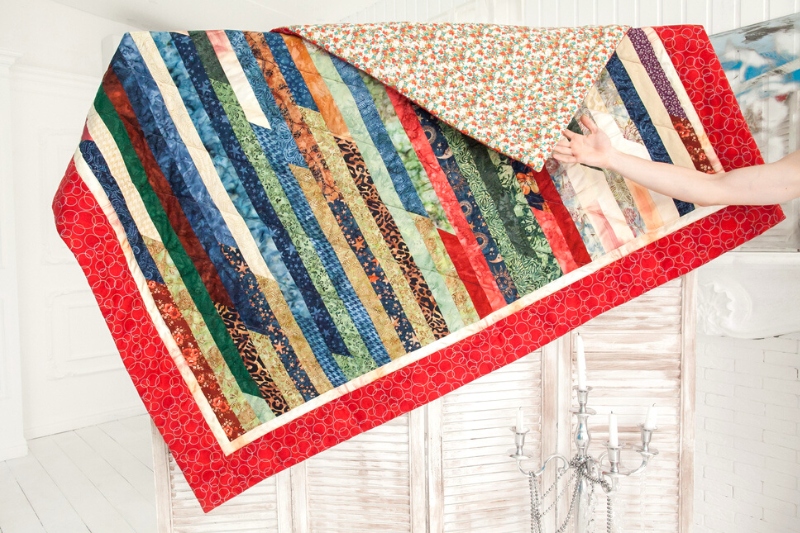A quilt can be a precious possession, particularly if it’s handmade. Looking after a quilt can take a bit of work, but it’s necessary if you want to keep it fresh and looking its best.
In this article, we’ll look at how often to wash a quilt. By this, we mean padded, sewn bed throws rather than duvets. It’s an important distinction because the cleaning steps are different for both.
How Often to Wash a Quilt

Quilts should be washed as infrequently as possible. At most, you should wash a quilt roughly twice a year, but this’ll depend on how it’s used (and how often) and whether it’s visibly dirty.
A handmade quilt will often be made with different fabrics and colours. Washing too often can fade colours or cause them to bleed into each other, both of which can ruin your beloved quilt.
Generally, though, a quilt is used as a bed covering rather than a duvet/blanket that comes into direct contact with your body. As such, we can get away with washing them less often because they won’t get dirty as quickly as bedsheets, for example.
Ideally, you’ll want to spot-clean any minor marks on a quilt and air them to remove any odours. Only wash them as a last resort, and use the steps below to protect the colours and fabrics.
How to Wash a Quilt

Washing a quilt isn’t really difficult but it does take a bit of care.
You’ll want to wash it by hand if you can, which will require a bath or large bowl depending on the size of your quilt.
Try to avoid using a washing machine, as this will probably be too abrasive on the fabric and stitching.
To wash a quilt by hand, do the following:
- First, test for colour fastness. Wet a small cloth (such as a flannel) and rub it on each of the coloured sections. If you notice any colour transfer from the quilt, take it to a dry cleaner instead.
- If you can wash it yourself, start by filling your bath with cold water. Add a couple of tablespoons of gentle laundry detergent to the water.
- Put the quilt in the water and make sure it’s submerged. Agitate the quilt gently and leave it to soak for 10-15 minutes.
- Let the water out of the bath and gently press the quilt to remove excess water. Refill the bath with clean cold water and rinse the quilt by agitating it.
- You can add around 150ml of white vinegar at this point to help remove odours, but it’s not necessary.
- Repeat step 4 if you think it needs another rinse.
- Remove the quilt and wrap it in a towel. Press on it to help extract as much water as you can.
- Hang the quilt to air dry, or lay flat on a bed of towels if the stitching is delicate.
If you need to wash your quilt in the washing machine, use a cold water setting (30 degrees Celsius) and the gentlest wash cycle. Hand-washing is best, but might not be practical for larger quilts.

Final Thoughts
Washing a handmade quilt should be done as infrequently as possible to preserve the stitching and fabric colour.
Luckily, a decorative quilt won’t need washing too often because it shouldn’t come into contact with much that makes it dirty.
When you do need to wash it, just make sure you’re as gentle as possible with it.

Jacob is a writer based in Wales, where he lives with his partner and two dogs. All his work is fuelled by extensive research and buckets of coffee.






